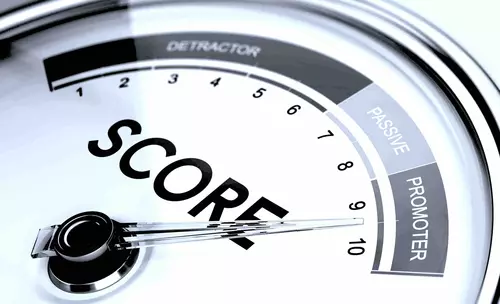Net Promoter Score
Net Promoter Score (NPS) – What Is It and Why Is It Important
You might also like…
Why Qualitative Research is Essential in Market Research (and How EthOS Elevates It)
Discover why qualitative research is such an important part of market research and how OvationMR's tool EthOS can help. By: Anne Collins Date:...
Why AI Tools Built by Researchers Make a Difference
Learn more about AI-powered market research tools and why tools build by researchers for researchers are leading the charge. By: Erik Larson Date:...

Introduction to Net Promotor Score
Marketers and managers have long been facing the challenge of developing and maintaining customer loyalty. With consumer preferences, buying behavior, and general consumer behavior shifting with the dynamics of continuously evolving markets, it’s critical that marketers are invested in brand tracking.
Brands should leverage key performance metrics to adjust their products and loyalty programs to keep up with changes and sustain positive customer experiences.
This is where Net Promoter Score® (NPS®) comes in.

Understanding Net Promoter Score (NPS)
The Roots
Whenever Net Promoter Score is discussed, the name Frederick F. Reichheld pops up. He is considered as the one responsible for birthing this metric that has become central in measuring customer experience and satisfaction.
Outside of extensive market research that involved long surveys that customers were hesitant to fill out, the years prior to 2003 lacked a formal way of quantifying word-of-mouth customer satisfaction.
This is when Reichheld’s brain started churning. He observed how Andy Taylor, CEO of Enterprise Rent-A-Car measured the performance of his company. Using his own take on Andy’s two-question model, Reichheld created the Net Promoter Score and introduced it in an article published in the Harvard Business Review in 2003.
Today, this measurement index has become the gold stands for measuring customer experience, predicting customer loyalty.

What is NPS?
NPS is a metric used to develop loyalty and customer experience programs. It measures customer loyalty by determining their likelihood of recommending or referring the brand or company’s products or services to others.
Companies use NPS to collect customer feedback and assess how content their target market is with the services or products it provides. A single-question survey is used to measure this score, which is reported numerically between. The score ranges from -100 to +100, with higher scores on the positive side being more desirable.
A higher NPS indicates customer satisfaction and that the company’s customer experience program is effective in sustaining their loyalty. The score implies that more people are willing to recommend your products or services to their friends and family.
In addition to measuring customer satisfaction, a different version of the Net Promoter Score survey is used in the context of a workplace. The score measures the employees’ willingness to refer the organization to their friends and past employees. This version of NPS is called the Employee Net Promoter Score or eNPS.
How is NPS measured?
As explained above, NPS surveys are based on the following question or a similar variant:
How likely are you to refer [Company X’s] [product or service Y] to a friend, colleague or family member?
The idea here is to prompt them to tell if they are satisfied with the customer experience the company provides based on their willingness to recommend it further.
The question features an 11-point scale with options ranging from 0 to 10. Based on the number they choose, the respondents fall into three categories, promoters, passives, and detractors.
Here is a breakdown of the categories:
Promoters
Respondents with a score between 9 and 10 are called promoters. These are considered as loyal and enthusiastic customers, displaying value-creating behaviors. This means they are more likely to promote your products and remain loyal customers for the long-term.
Passives
Respondents scoring between 7 and 8 are considered as passives. These are customers that might be satisfied with your product/service and overall customer experience but not impressed enough to recommend it to others.
Detractors
On the opposite spectrum of promoters, detractors are respondents with a score between 0 and 6. These are customers that are dissatisfied with your product/service and customer experience. Not only are they less likely to make a subsequent purchase, but they might also go as far as discouraging others from buying.
Calculating NPS

While there are calculators built into market research platforms providing NPS measurement as a perk, it is pretty easy to do the calculations yourself. All you need is an accurate record of survey responses in an Excel sheet where you can easily subtract the total percentage of detractors from the total percentage of promoters.
- Start out by sorting responses with a score of 9-10 first and count the total. Then divide the number of promoters by the total number of responses you received and multiple the result with 100 to get the promoter NPS.
- Next, repeat step 1 except, count the number of detractors (scores 6 or lower) to obtain the detractor NPS.
- Subtract the detractor NPS from promoter NPS to get the overall NPS.
For example:
Let’s consider you have a total of 600 promoters, 150 passives, and 250 detractors out of a 1000 survey responses. This is what the calculation will look like:
- Promoter NPS = (600/1000)*100 = 60%
- Detractor NPS = (250/1000)*100 = 25%
- Overall NPS = 60% – 25% = 35%
Net Promoter Score Types
There are two types of Scores based on survey administration frequency:
Relational NPS surveys are typically conducted periodically on a regular basis. They can be deployed on a monthly, quarterly or annual basis to measure customer satisfaction. The data obtained may help the company keep up with customer loyalty, providing a benchmark to maintain.
Transactional NPS surveys are typically sent out after every customer interaction. For example, you may receive one after you make a purchase or after you call a customer service representative.you to recommend XYZ to friends or family?):
Creating NPS Surveys
Considering that NPS surveys are based on one question, they are relatively easy to develop. Here are examples of what you can include in your NPS survey in addition to the core question (How likely are you to recommend XYZ to friends or family?):
Demographics
While not directly impacting the NPS score, demographics like age, gender identity, income, employment status, etc. can help you segment responses when you’re analyzing the data. You don’t have to add these questions as this data can be obtained from CRM portals or existing customer databases.
A reasoning for their score
This open-ended question is a recommended addition for NPS surveys as it gives more substance to your research. While the NPS itself indicates your customer’s satisfaction with the overall experience, this question adds context to the respondent’s numerical answer to the NPS question.
Recommendations
Again, this question is a suggestion for researchers and marketers that want to get more granular results from the survey without extending it. The responses to “how can we improve your experience”, especially from detractors will be helpful when you’re making decisions for improvements, developing loyalty programs or revamping the customer journey.
Why Use Net Promoter Scores?
The benefits are quite apparent based on what the NPS achieves for brands and organizations looking to improve customer experience and increase loyal clientele. Here are some other reasons why Net Promoter Scores are important metrics for marketers to consider:
1. Identifies dissatisfied customers
Detractors identify customers who are not happy. You can obtain individual respondent data and devise a strategy to build customer loyalty by pursuing further inquiry into their reason for dissatisfaction. You can create individualized loyalty programs and offers that get them back on the roster to give your brand a second chance.
This is an important advantage of NPS surveys as it is unhappy customers that are more likely to share bad experiences with others.
2. Attaining and Retaining Customers
Promoter data from your NPS survey can be used in two ways.
- To attract new customers by requesting promoters to leave reviews, or share their experiences on social media, Google Reviews or other similar platforms as user-generated content is more persuasive.
- To retain existing loyal customers by creating a promotion as gratitude for their continued loyalty. Also, you can determine what aspects of your customer experience/ product/ service they like and up-sell or cross-sell similar products or services you offer.
3. Customer-Brand Communication
Not only do NPS surveys convey your organization’s customer-centricity but it also opens channels for communication. Customer loyalty is greatly impacted by whether customers feel like they are valued by the organization.
.
What is a “Good NPS”?
It might sound clichéd, but it depends.
You can’t find a benchmark NPS that all brands should target. As long as it is positive, it can be considered good. Aim to set your own benchmarks by conducting periodic NPS surveys and using that information to improve your customer experience.
However, if your NPS score is below 20 or on the negative side of the scale, it might be time to reevaluate your marketing tactics and product/service quality as it may limit your growth.
Follow
OvationMR

Need help with new insights?
We are ready to offer you:


